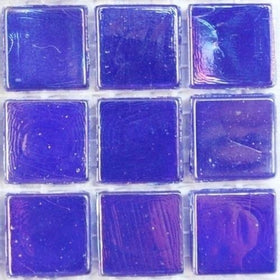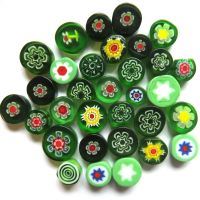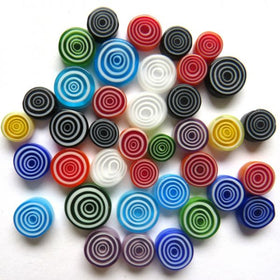Labour of Love: a tale of two artists
Mosaic construction lends itself well to the labour of love that is created over time. The mosaic murals and structures of two men, Isaiah Zagar and Raymond Isadore remind us all that art can exist in what seems mundane. Each man, in his own way, shows us that an internal reality can be actualized externally through creative activity that spans a period of many years. In the case of Raymond Isadore the passage of time included three whole decades.
Raymond Isadore; La Maison Picassiette

 Now designated a National Historic Monument of France, the home of graveyard sweeper, Raymond Isadore is completely covered by his own original mosaic designs. He took inspiration from bits of broken pottery he found on daily walks and began to decorate the surfaces of the home he constructed for his family in 1930. As Isadore’s work progressed he made regular trips to the local garbage dump looking for broken plates and crockery to use in his mosaics. This garnered him the nickname “Picassiette” which loosely translated means plate thief.
Now designated a National Historic Monument of France, the home of graveyard sweeper, Raymond Isadore is completely covered by his own original mosaic designs. He took inspiration from bits of broken pottery he found on daily walks and began to decorate the surfaces of the home he constructed for his family in 1930. As Isadore’s work progressed he made regular trips to the local garbage dump looking for broken plates and crockery to use in his mosaics. This garnered him the nickname “Picassiette” which loosely translated means plate thief.
Eventually he completely decorated the interior of his small home with mosaic designs including: chairs, tables, window sills and frames … and even objects of daily use like his wife’s sewing machine! He then moved on to the exterior of the home and finally he created a walled garden space with paths, seating, wall murals, decorated flower pots, planters and urns.
His artistic labours spanned a period of almost 30 years. The subject matter in this very personal labour of love is varied and includes tributes to the works of art that Isadore found inspiring such as the Mona Lisa and the architectural wonders of the Eiffel Tower. With his mosaic work, Isadore created a home environment that was ordered and at the same time incredibly beautiful.
Raymond Isadore would live for only two more years after the final mosaic piece was cemented into Maison La Picassiette. He died in 1964.


Isaiah Zagar and his Magical Garden
 It would be impossible to visit the South Street neighbourhood in Philadelphia and not encounter public artwork created by Isaiah Zagar. Born in Philadelphia Zagar spent the early part of his life in Brooklyn, New York. Eventually, after graduating from the renowned Pratt Institute of Art in New York, he would make his way back to Philadelphia where he still lives today and continues to create large scale artworks.
It would be impossible to visit the South Street neighbourhood in Philadelphia and not encounter public artwork created by Isaiah Zagar. Born in Philadelphia Zagar spent the early part of his life in Brooklyn, New York. Eventually, after graduating from the renowned Pratt Institute of Art in New York, he would make his way back to Philadelphia where he still lives today and continues to create large scale artworks.
An encounter with the sculptural installations of Clarence Schmidt, an untrained “outsider” artist, would profoundly influence the direction of his own work. A visit to one of Zagar’s most acclaimed public artworks, Magic Garden, unapologetically confirms what he alludes to in his artist statement. In all of his work Zagar aspires to create what he calls “a total encyclopedic vision that has no parameters and no end.” It is precisely this element in the work of the outsider Schmidt that hit Zagar like a ton of bricks. It has propelled him through many years of a successful career that is still ongoing.
Philadelphia’s Magic Gardens was created by Zagar over a period of fourteen years. The walled installation which is completely covered with mosaic design includes interior spaces connected by staircases and hallways as well as an exterior sculptural garden. Everything is covered in mixture of materials; carefully crafted hand-made tiles, found objects, shards of glass and repurposed commercial tiles and mirrors.
It is indeed a stream-of-consciousness extravaganza that explores the internal universe and external reality of the artist himself. The structures, bits of poetic text, recorded names of inspirational artists and dream-like imagery of animals and people that make up this installation artwork dare the visitor/participant to examine and respect their own dreams and hidden desires.

















